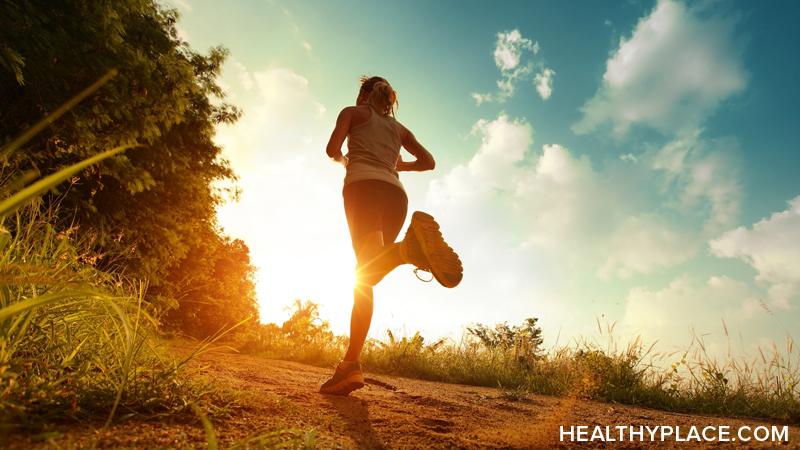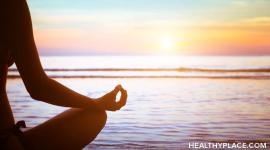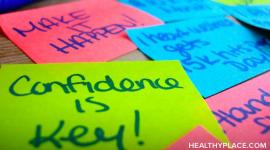Exercises to Relieve and Reduce Anxiety

Many different types of exercises to relieve and reduce anxiety are available and easily accessible to all of us. Anxiety-reducing exercises don’t have to be fancy to work (and in fact, usually the simpler they are the better they work). All exercises to relieve anxiety involve some sort of action, and action is what takes power away from anxiety and puts it back with you. Ready to empower yourself and to actively reduce your anxiety? If so, check out the following exercises to relieve and reduce anxiety.
Anxiety affects our thoughts, emotions, and behaviors. Anxiety agitates all of these, and racing thoughts and swirling emotions are common to all anxiety disorders. Anxiety can make us freeze in fear, or it can make us keyed-up, restless, and hypervigilant. Anxiety makes us wired. And because of that, it makes us tired. Engaging in anxiety-reducing exercises will help all of this. Start with the area that is troubling you the most, and progress from there, systematically relieving anxiety.
Exercises for Anxiety That Calm Your Brain
Relaxing exercises for anxiety induce inner calm.
- Practice mindfulness. Mindfulness means living in the present moment and allowing our anxiety and worries about the past and future to fade away. Use all of your senses to fully experience your moment, your life. When you notice your thoughts wandering, gently turn them back to what you’re doing.
- Use imagery. This involves focusing your attention on a calming object or image, visualizing it completely (what does it look like? Sound like? Etc.) in your mind while breathing slowly and deeply.
- Massage. From a partner or a practitioner, touch is a powerful exercise to help anxiety.
- Meditation for anxiety. Even just 10 minutes a day will soothe the brain and reduce anxiety. Don’t worry so much about technique or “getting it right.” Sit comfortably, breathe deeply, and simply let your thoughts come and go.
- Progressive relaxation. With or without a recording, concentrate on each part of your body, one at a time. Starting at your feet, tense, hold, and relax your muscles. Work your way up to your head.
- Take quiet breaks. Anxiety can build throughout the day. Notice when your anxiety is increasing, and take a short break where it’s quiet.
- Practice yoga for anxiety. Intentional poses, stretches, and postures have a calming effect on both brain and body.
- Listen to soothing music. Because music has been shown to have a direct influence on how we think and feel, listening to relaxing music is a great calming exercise for anxiety.
Release Pent-Up Anxiety
Get physical. Exercise to reduce anxiety works. Says anxiety expert Dr. Carolyn Clark, “Movement is one of the simplest, most effective ways to reduce anxiety and stress” (2006, p. 102). Exercise also rids the brain of toxic worry and anxiety, things that run in the background of our minds all day and sometimes even night (Hallowell, 2002).
- Do any exercise you enjoy. The idea is to burn off anxiety, and when you are doing something that doesn’t feel terrible, it is very effective.
- Listen to peppy music, and move to it. Music can calm, and music can energize. Crank up your favorite upbeat tunes, and move and shake to them.
- Walk. Taking short walk breaks during the day helps keep anxiety levels consistently lower.
- Laugh. Laughter provides a release, reduces stress hormones, releases our feel-good hormones known as endorphins, and induces a global sense of wellbeing.
To maximize exercise’s anxiety-reducing benefit, avoid multi-tasking. Be mindful of the process. If you do enjoy reading a book or watching TV while on the treadmill, just make sure that they’re light and entertaining. Avoid cramming for an exam while exercising or watching the news. The idea is to reduce anxiety, not increase it.
Empower Yourself
The below exercises empower by activating our thoughts.
- Journal. Writing about our thoughts and feelings helps get them out of our head and onto paper where we can better deal with them. When you journal, write about positive things, too, such as gratitude, good things that happened, beauty you’ve noticed, hopes, dreams, and more. This is very effective in reducing anxiety because it shifts attention away from anxiety and replaces it with the positive.
- Find flow. Discover an activity that you enjoy doing so much that when you’re doing it, you’re fully engaged. Your anxious thoughts will drop away as you’re immersed in your activity.
- Track your anxiety. Use a log or diary to record triggering events, their settings, your reactions, the intensity, who else was there, etc. This will help you find patterns to your anxiety that you can then address.
The above ideas are mere suggestions to get you started. Pick and choose from the lists, and create some of your own. Whatever you do, just do it. The very best exercise to reduce anxiety is action.
APA Reference
Peterson, T.
(2021, December 21). Exercises to Relieve and Reduce Anxiety, HealthyPlace. Retrieved
on 2025, December 29 from https://www.healthyplace.com/self-help/anxiety/exercises-to-relieve-and-reduce-anxiety


